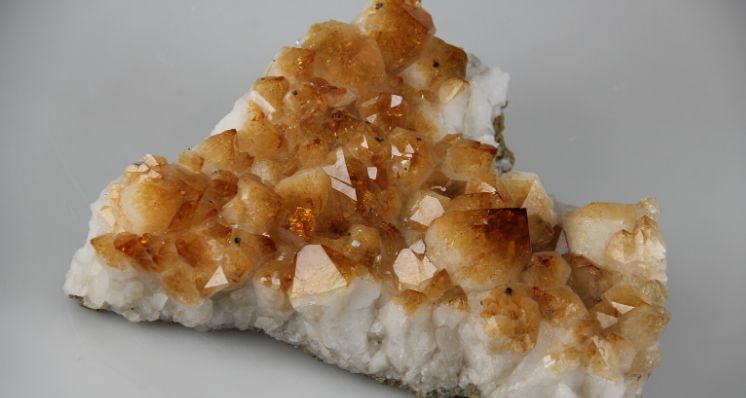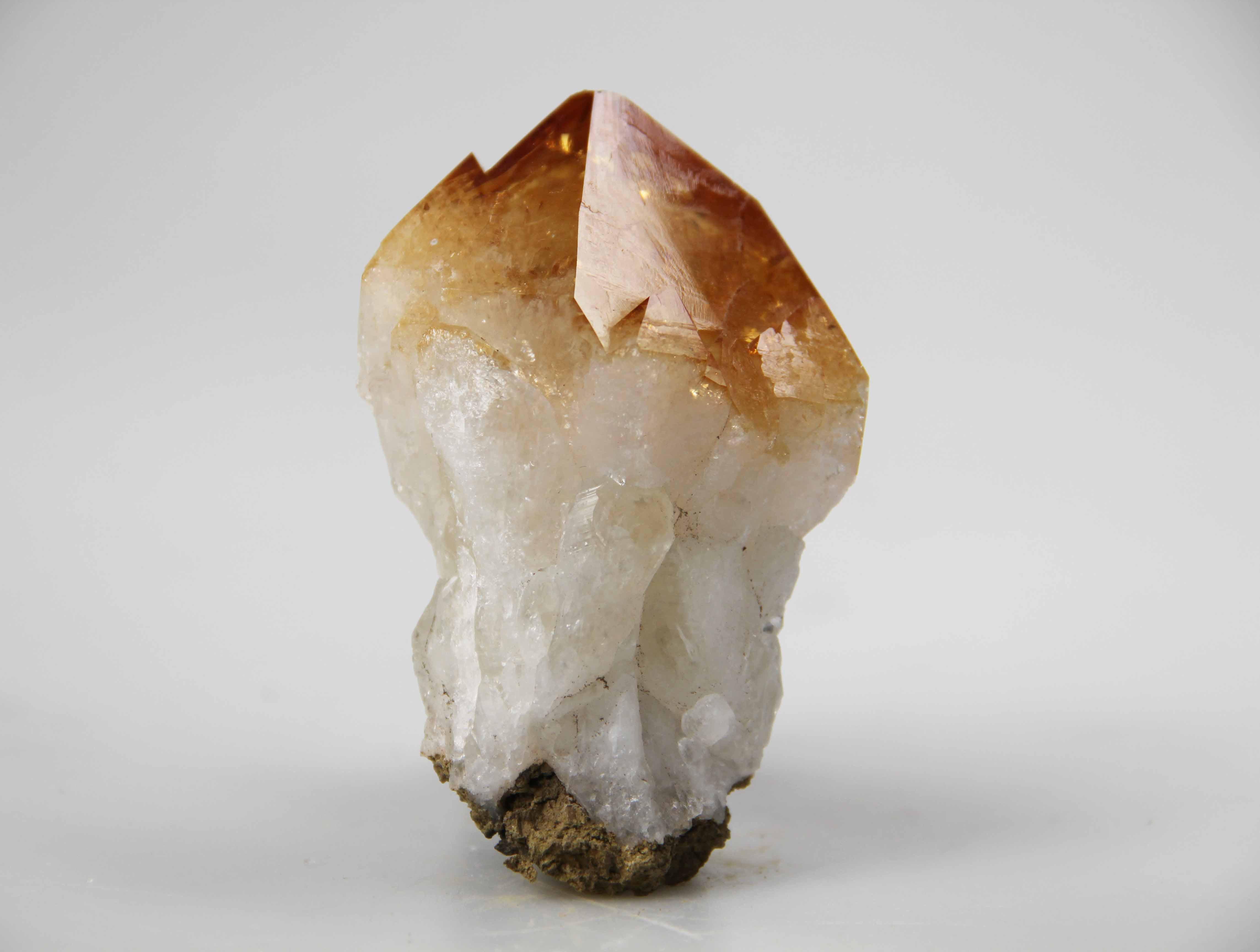
As we enter the dark winter months, November’s birthstone citrine offers rays of warm yellow-orange sunshine. Here, gemmology tutor Lily Faber FGA DGA EG explores the properties and folklore around this sunny gemstone.
Citrine is a type of crystalline quartz that comes in many different hues of yellow, from pale buttercup shades to a stronger orangey or even brown-tinged yellow. Prized for its sunny appearance, citrine has long been popular in the gem and jewellery trade, especially in statement cocktail jewellery.
Citrine Myths and Folklore
For centuries, citrine has been said to hold the power of the sun. The stone is also believed by many to counteract depression and fight back against phobias. Citrine is known as a gemstone that can help its wearer remain calm in stressful situations because of its ability to attract good and positivity. Its characteristic yellow-to-orange colour is caused by a trace of iron in its structure.
Citrine Localities
Did you know? A little-known fact is that lots of citrine offered on the market is often amethyst that has been heat-treated to promote a golden colour. Natural citrine can be difficult to find, despite quartz being one of the most abundant gem minerals in the Earth’s crust.
Part of a citrine crystal. Photography by Henry Mesa, Gem-A.
This gemstone is found worldwide, but some of the most important localities of note are Brazil, India, Madagascar and Sri Lanka. In Bolivia, amethyst and citrine hues can occur together in the same crystal. These multi-colour gemstones are called ametrine.
Citrine Crystals and Inclusions
Citrine can be found as stand-alone crystals or as a geode containing multiple crystals within a rocky pocket. If sold as an individual crystal, citrine will have a hexagonally shaped prism with a pyramidal termination and slightly thicker base.
Read more: Exploring the Varieties of Quartz
There may be fractures within the crystal that cause iridescence, and the surface may feature striations that run horizontally across the prism faces (if the surfaces have not been polished).

A heated Brazilian citrine of 128.78 carats in a StarBrite cut by John Dyer & Co. Photo courtesy of Priscilla Dyer.
Inclusions in citrine can be highly variable. However, it mostly has similar inclusions to those in amethyst, such as tiger stripes, straight colour-zoning, incipient fractures (mentioned above), crystals and two-phase inclusions consisting of a liquid and a gas, or a solid crystal and a liquid.
Citrine Care and Caution
Quartz is a 7 on the Mohs scale of hardness, endowing it with the ability to be set into any piece of jewellery, whether it is a ring, necklace or earrings. Considered hard, citrine will resist scratches and abrasions, but it is not impervious to these attacks and care should still be taken when wearing it in everyday life.
Read more: 5 Things to Consider Before Taking the Gem-A Gemmology Foundation Course
Whether you like its appearance or the meanings behind it, citrine is a fantastic gem that can hold a high polish. This warm, bright and occasionaly overlooked gemstone that can be transformed into stunning pieces that add a touch of sunshine to any jewellery collection.
Read more: What Career Paths Can Trained Gemmologists Take?
Start your gemmology journey by exploring our Short Courses and Workshops.
Discover more about the history of Gem-A and what makes our world-renowned gemmology education so special, here.
Cover image: A rough citrine cyrstal specimen in the Gem-A Gemstone & Mineral Collection, photographed by Henry Mesa.



